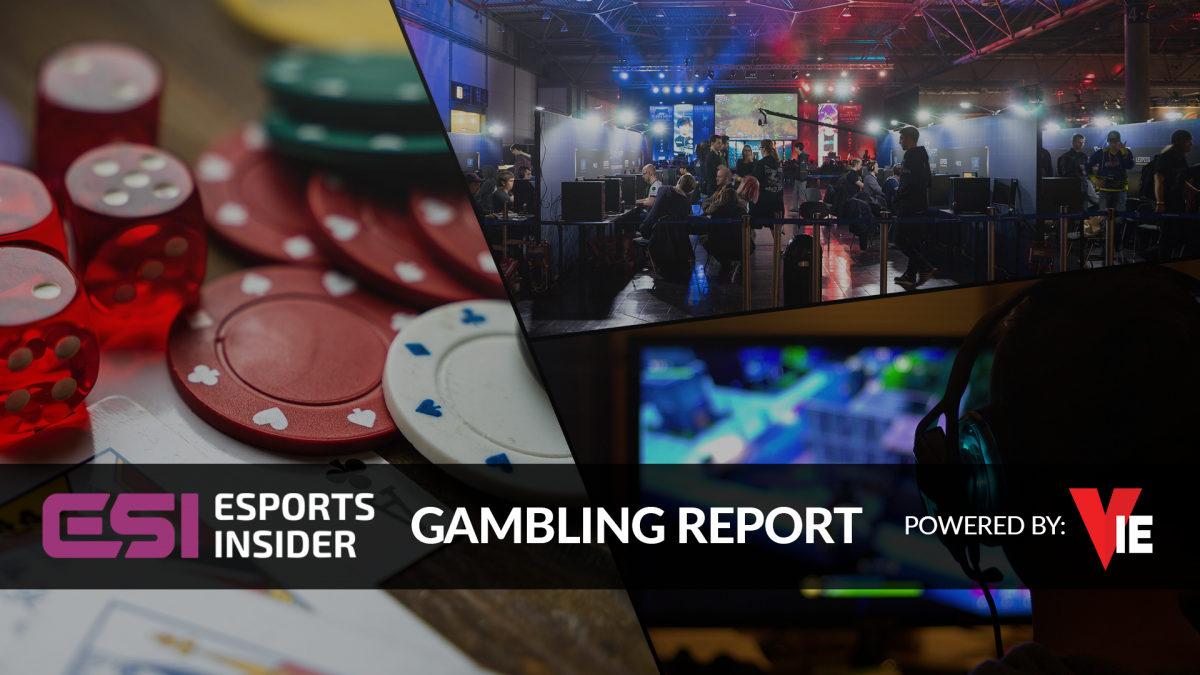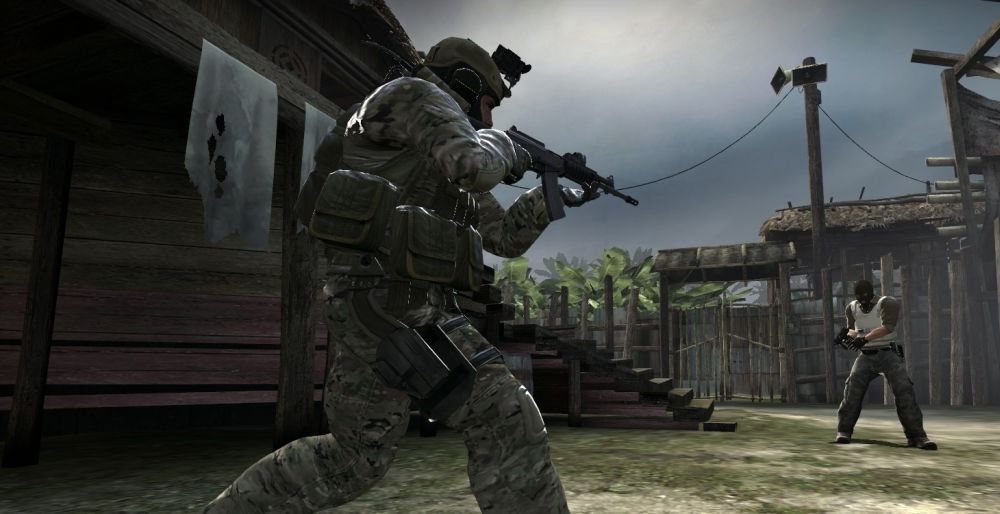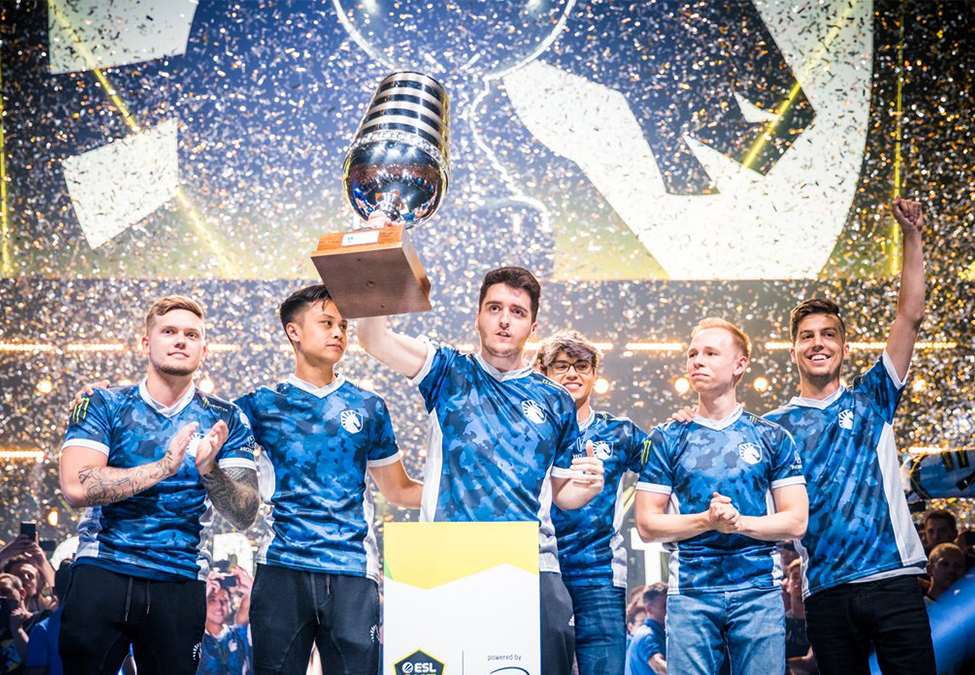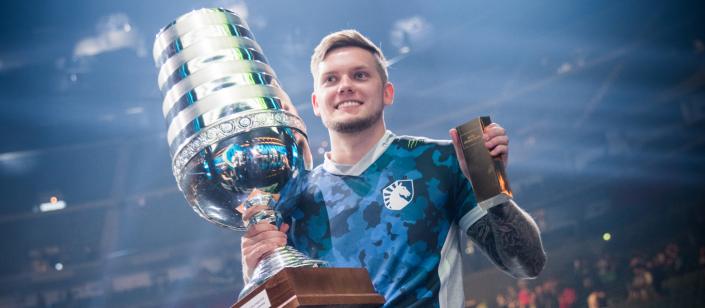Amidst a congested tournament environment, Counter-Strike: Global Offensive has, in some regards, struggled to differentiate one tournament from the next. One modern accolade, however, has collided with the current vista and created a class of its own.
Arriving in 2017, the Intel Grand Slam has been subject to wide discussion and respect for a number of reasons. We decided to take a much deeper look into the significance, purpose, and origin of the award in this iteration of the ESI Gambling Report, powered by Vie.gg.

A crowded landscape
Counter-Strike: Global Offensive is one of esports most recognised and celebrated titles, sporting a bustling community of impassioned fans alongside a long and vibrant history. A luminary in competitive gaming’s ancestry, the Counter-Strike franchise brandishes a lively esports atmosphere, celebrating its 20th anniversary this past June.
The popularity of Valve’s first-person shooter has spawned a large infrastructure able to support each calibre of player, in one way or another. Hosting tournaments for CS:GO fall well within community guidelines of the game’s developer; so while some game creators may attempt to regulate events by size and prize pool such as Respawn Entertainment and Nintendo, CS:GO is essentially up for grabs by whomever.
Although, the model has, to some measure, led to an over-saturation of calendar events – creating an atmosphere where distinction of tournaments can become muddled. Michal “CARMAC” Blicharz, Vice President of Pro Gaming at ESL attested to this belief when speaking to Esports Insider.
“If you look at the Counter-Strike ecosystem, you see that there’s a number of events and – outside of the Majors – there’s not really an overarching narrative to the events. There’s not an objective way to say, ‘okay, these guys are clearly head and shoulders above’.”

There are, of course, incongruities to this notion: ESL One: Cologne – or the ‘Cathedral of Counter-Strike’ as it is often referred to – has staged some of the game’s largest gatherings and enthralling moments at the famed Lanxess Arena. IEM Katowice could be compared to somewhat of a Wimbledon of esports, being the first event of its calibre in the West and carrying on that tradition for a number of years. These, and of course, the Major Championships – Valve-sanctioned tournaments that boast a lofty $1 million (£811,205) prize pool and the most cutthroat competition CS:GO has to offer.
“We thought about this at the company and we thought, okay, what if we create an accolade which actually binds our events into that narrow where there’s an achievement that is beyond one week’s performance, that’s meaningful, that would be something so awesome in terms of prestige and prize money that players would want it,” said CARMAC.
Throughout the countless tournaments held over the year, a new accolade entered the ring and quickly established itself as, perhaps, CS:GO’s most prestigious: the Intel Grand Slam.
Origins
In June 2017, ESL had announced the Intel Grand Slam alongside its long-standing partner Intel. The ongoing series would set out to crown one team that was able to place first at four designated ESL and DreamHack Masters tournaments within a window of 10 consecutive events. The winning team would then be awarded a $1 million (£811,205) prize purse split among the members for their efforts.
It’s intentions were simple: to place an emphasis around each event, to which every tournament would build towards a much larger chronicle. An accolade that rewarded teams whom had performed exceptionally over the course of an entire season, rather a weekend.
The first recording of the Intel Grand Slam being achieved occurred at ESL Pro League Season 8 Finals in Odense, Denmark. Danish organisation Astralis were first to meet the requirements, culminating a year of uncontested dominance and further solidifying the team’s legacy. It was the first time in which ESL and Intel’s newest merit would be dealt, but certainly not the last.
Introducing Season 2
The inaugural Intel Grand Slam was bestowed upon Astralis, and as mentioned, it came after a year of fighting tooth and nail among the circuit – but most importantly, it cemented the organisation’s era in CS:GO. Barring the Dane’s unmistakable supremacy on the international stages that year, it instilled a belief that the Intel Grand Slam’s arrival would be few and far between. That was of course until Team Liquid was able to secure the Season 2 prize in just 63 days – a pace likely to be unrivaled for quite some time.

Following Team Liquid’s swift capturing of the award, there were some plausible doubts around the Intel Grand Slam returning for a third edition in view of the sizable financial commitment. Although, CARMAC confirmed to Esports Insider that the capital was far from the point.
“The money there is completely and entirely secondary. It’s the emotion and the memories that we’ve managed to make happen. The players made them happen, but we’ve created an environment for that to happen. And for that to transpire in front of my eyes, it’s for me and for most people in the crew who are esports fans. It’s just a magnificent moment that we were a part of and we’ve helped, again, build the conditions to happen.”
An evolving concept
The speed in which Team Liquid was able to achieve the necessary requisites was undoubtedly impressive, although, in some ways, it comprised the significance of the accolade. Just a few weeks later, Season 3 of the Intel Grand Slam was announced with an updated rule set.
“We wanted the rules to reflect the spirit in which the Intel Grand Slam was designed,” CARMAC said of the changes. “It was designed as a monumental achievement that only very few teams across history are able to complete.”
Per the newest amendments, teams would have to earn a title finish across six out of ten events as opposed to the previous four to complete the Intel Grand Slam. However, squads could still achieve the award by winning four tournaments, although it would have to include at least one of two designated Masters events – such as IEM Katowice and ESL One: Cologne.

“Both Katowice and Cologne have been events at an unprecedented scale, and we’ve managed to, through good work and a lot of sweat and tears, build on that legacy and tradition,”CARMAC posits. “If you don’t validate your status on that stage, are you really the best in the world?”
It has also been acknowledged that over time, as CS:GO continues to develop, the Intel Grand Slam may be subject to further changes as to serve its intended purpose and match the game’s competitive demand.
“You shouldn’t be able to win three in the year because that devalues the entire concept,” explained CARMAC. “So I wouldn’t put it past us to increase the prize money in the future, if Counter-Strike and esports grows. I wouldn’t put it past us to alter the rule set again to make sure that this is truly the best accolade to be won.”
The prestige
One thing ESI set out on understanding was the true weight of the Intel Grand Slam – what it was proposed to signify and what was its reality. The defending title-bearers were asked at a press conference after the recent IEM Chicago what their interpretations of the accolade were, to which Team Liquid’s coach, Eric “adreN” Hoag admitted it was “hard to say” in light of its very recent emergence. Ultimately, the players and fans of CS:GO will dictate what the award means to them, which ESL & Intel inevitably must accept.
Regardless of what the overall impression of the Intel Grand Slam is, the accolade will function as a compelling gauge of CS:GO’s greatest teams, as CARMAC very passionately expressed: “That’s the beauty of it because we ultimately create a category where it’s a tool made for interesting comparisons. It’s interesting to compare LeBron James to Michael Jordan. You really can’t, but it’s interesting to talk about it. You find different angles, criteria to look at.”
The award will forever be subjective in terms of its meaning but it offers both ESL, and its official technology partner Intel, an opportunity to further link their brands to a monumental achievement in esports since the pair started working together almost two decades ago.

The Intel Grand Slam is, at length, an apparatus for interesting comparisons in CS:GO. It’s a firm metric able to identify eras and periods of true distinction brought forth by the greatest teams to touch its competitive circuit. In addition to recognising the scarce few able to meet its towering qualifications, the accolade creates a much larger narrative that accentuates each tournament that it comprises of.
Lastly, as CARMAC so finely encapsulates, the Intel Grand Slam creates moments: “I think people remember, and that’s the entire point. I think people [will] remember these guys for a long time. Both Astralis and Liquid, and that’s the point. We live for this. What happened with Liquid, that’s what we live for. We live to create amazing experiences and moments that people remember.”

